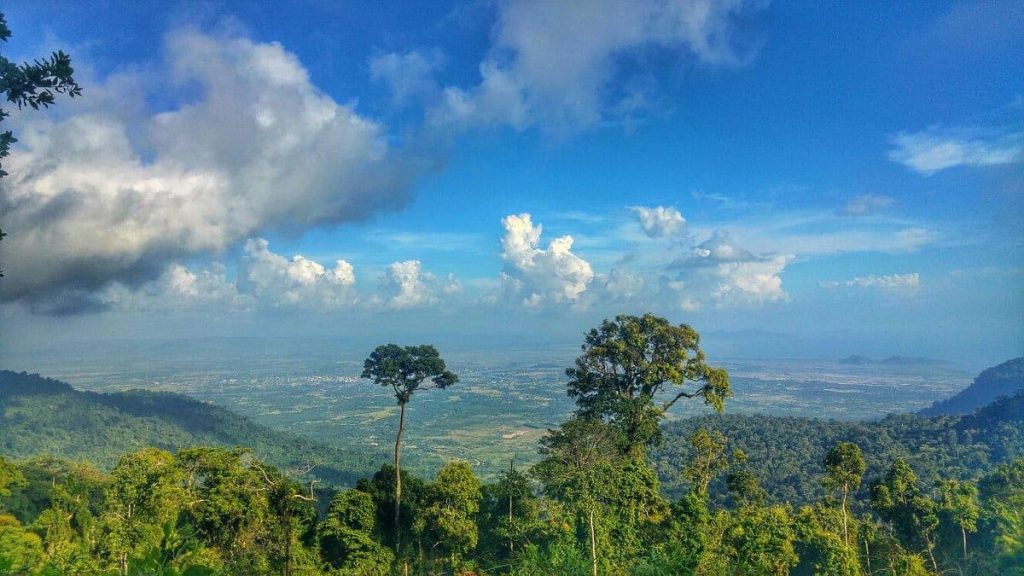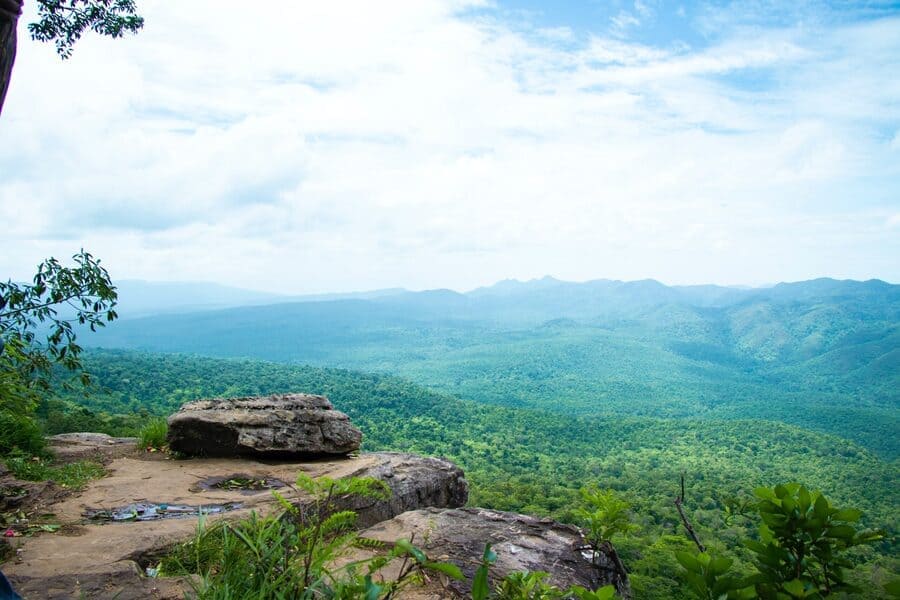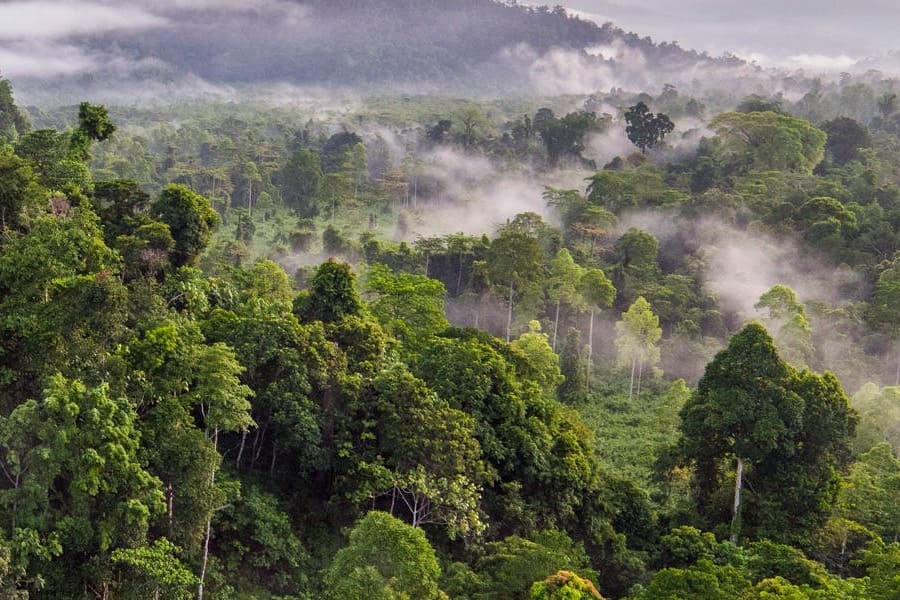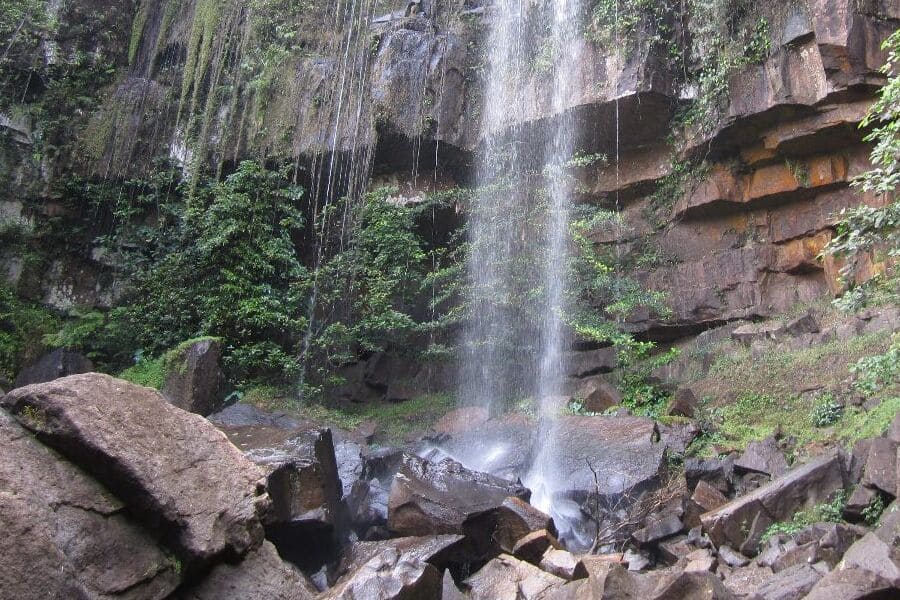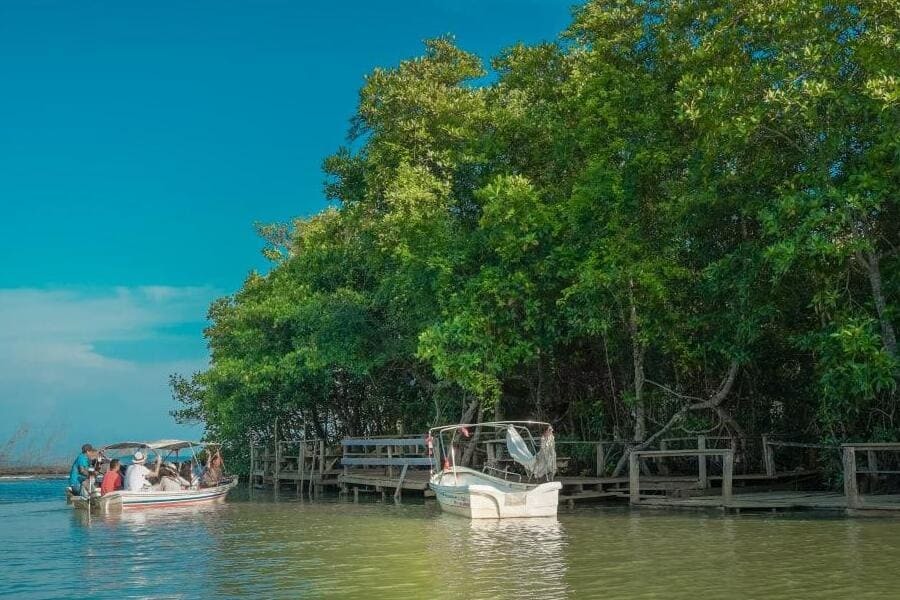Embarking on a Cambodia tour offers travelers the chance to explore the nation's breathtaking national parks of cambodia, where nature's splendor and biodiversity are on full display. From the lush rainforests of Cardamom Mountains to the serene landscapes of Bokor National Park, these protected areas are vital for conservation and provide unparalleled opportunities for eco-tourism.
Contents
An Overview of National Parks in Cambodia
Cambodia's national parks are veritable havens of natural beauty, biodiversity, and cultural significance, offering visitors a glimpse into the country's rich ecological heritage. From dense rainforests to pristine coastal areas, Cambodia's national parks encompass a diverse range of ecosystems, each teeming with unique flora and fauna. Here's an overview of some of Cambodia's most notable national parks:
Virachey National Park:
Located in northeastern Cambodia, Virachey National Park is one of the country's largest and most biodiverse protected areas. Home to a stunning array of wildlife, including elephants, tigers, and gibbons, as well as rare bird species and endemic plants, Virachey is a haven for nature lovers and adventurers alike.
Bokor National Park:
Nestled in the Elephant Mountains of southwestern Cambodia, Bokor National Park boasts a mix of tropical rainforest, rolling hills, and dramatic cliffs. The park is known for its scenic viewpoints, historic landmarks, and diverse wildlife, including macaques, hornbills, and clouded leopards.
Preah Monivong Bokor National Park:
Another gem of southwestern Cambodia, Preah Monivong Bokor National Park encompasses lush forests, waterfalls, and sacred caves. The park is renowned for its cultural significance, with ancient temples, colonial-era buildings, and the iconic Bokor Hill Station, a historic hilltop retreat.
Cardamom Mountains:
Stretching across southwestern Cambodia, the Cardamom Mountains are one of Southeast Asia's largest and most biodiverse wilderness areas. Protected by a network of national parks and wildlife sanctuaries, including Botum Sakor National Park and Cardamom National Park, this region harbors a wealth of wildlife, including endangered species such as Asian elephants, Indochinese tigers, and Siamese crocodiles.
Kirirom National Park:
Situated in the lush highlands of southwestern Cambodia, Kirirom National Park is renowned for its cool climate, scenic vistas, and serene lakes. Visitors can explore hiking trails, visit waterfalls, and spot a variety of bird species in this tranquil natural retreat.
Ream National Park:
Located along Cambodia's southern coast, Ream National Park encompasses mangrove forests, coral reefs, and sandy beaches. The park is a haven for birdwatchers, with over 200 bird species recorded, as well as a popular destination for snorkeling, kayaking, and wildlife spotting.
Biodiversity and Ecosystems at the National Parks of Cambodia
Cambodia's national parks are renowned for their remarkable biodiversity and diverse ecosystems, which support a wide array of plant and animal species unique to the region. From dense rainforests to coastal mangroves, each national park harbors a rich tapestry of life, making them vital conservation areas for preserving Cambodia's natural heritage.
Within these national parks, visitors can discover a treasure trove of biodiversity, including rare and endemic species found nowhere else on Earth. Dense tropical rainforests, such as those in Virachey National Park and the Cardamom Mountains, are home to an incredible diversity of flora and fauna, including towering hardwood trees, orchids, and elusive mammals like Asian elephants, clouded leopards, and Malayan sun bears.
In addition to terrestrial ecosystems, Cambodia's national parks also encompass diverse aquatic habitats, including rivers, wetlands, and coastal areas. Ream National Park, situated along the southern coast, protects vital mangrove forests and coral reefs, providing critical breeding grounds for marine life such as fish, crustaceans, and migratory birds.
The Importance of Protecting Natural Beauty at National Parks of Cambodia
The importance of protecting natural beauty in the national parks of Cambodia cannot be overstated. These pristine wilderness areas are not only repositories of biodiversity but also essential for the health of ecosystems, the preservation of cultural heritage, and the well-being of future generations.
First and foremost, the national parks of Cambodia are home to a staggering variety of flora and fauna, including many endangered and endemic species. By safeguarding these ecosystems, we ensure the survival of rare plants and animals, maintaining genetic diversity and ecological resilience for the long-term health of the planet.
Furthermore, these national parks serve as living classrooms for scientific research and environmental education, providing invaluable insights into the intricate workings of natural systems and the impacts of human activities. By protecting these areas, we enable future generations to learn from and appreciate the wonders of nature, fostering a sense of stewardship and conservation ethic.
Preserving natural beauty in Cambodia's national parks is also crucial for safeguarding cultural heritage and traditional ways of life. Many of these parks contain sacred sites, ancient ruins, and cultural landmarks that hold deep significance for local communities. By respecting and protecting these cultural treasures, we honor the cultural diversity and spiritual connections that are integral to Cambodia's identity.
Moreover, the national parks of Cambodia play a vital role in promoting sustainable tourism and economic development. By attracting visitors from around the world, these parks provide opportunities for local communities to benefit from tourism revenue while promoting environmental stewardship and conservation awareness.
Conservation Efforts in National Parks of Cambodia
Conservation efforts in the national parks of Cambodia are vital for safeguarding the country's rich biodiversity and natural heritage. These efforts encompass a range of initiatives aimed at protecting ecosystems, preserving wildlife habitats, and promoting sustainable development. Here are some key conservation efforts being undertaken in Cambodia's national parks:
Habitat Restoration:
Conservation organizations and government agencies work together to restore degraded habitats within national parks, such as replanting native vegetation, restoring wetlands, and controlling invasive species. These efforts help to enhance biodiversity, improve ecosystem resilience, and mitigate the impacts of habitat loss and fragmentation.
Wildlife Monitoring and Protection:
Park rangers and wildlife conservationists conduct regular monitoring of wildlife populations to track population trends, identify threats, and inform conservation strategies. Anti-poaching patrols and law enforcement efforts help to combat illegal hunting, trafficking, and habitat destruction, ensuring the protection of endangered species such as Asian elephants, Indochinese tigers, and Siamese crocodiles.
Community-Based Conservation:
Engaging local communities in conservation efforts is essential for the long-term success of national park management. Community-based conservation programs involve local residents in conservation activities, such as habitat restoration, wildlife monitoring, and ecotourism initiatives. These programs provide economic incentives for communities to protect natural resources while empowering them to take ownership of conservation efforts.
Education and Awareness:
Environmental education programs and outreach initiatives raise awareness about the importance of conservation and the value of national parks. These programs target schoolchildren, community members, and visitors, providing information about biodiversity, sustainable resource management, and the role of national parks in protecting natural heritage.
Research and Scientific Collaboration:
Collaborative research projects between government agencies, conservation organizations, and academic institutions generate valuable data on biodiversity, ecosystem dynamics, and climate change impacts. Research findings inform conservation policies and management decisions, guiding efforts to prioritize conservation actions and allocate resources effectively.
Policy Development and Advocacy:
Advocacy campaigns and policy initiatives aim to strengthen legal frameworks, enhance protected area management, and promote sustainable land use practices. By advocating for stronger conservation policies and increased funding for national parks, conservation organizations seek to secure long-term protection for Cambodia's natural treasures.

